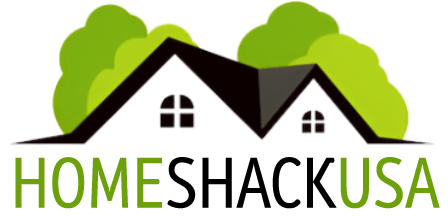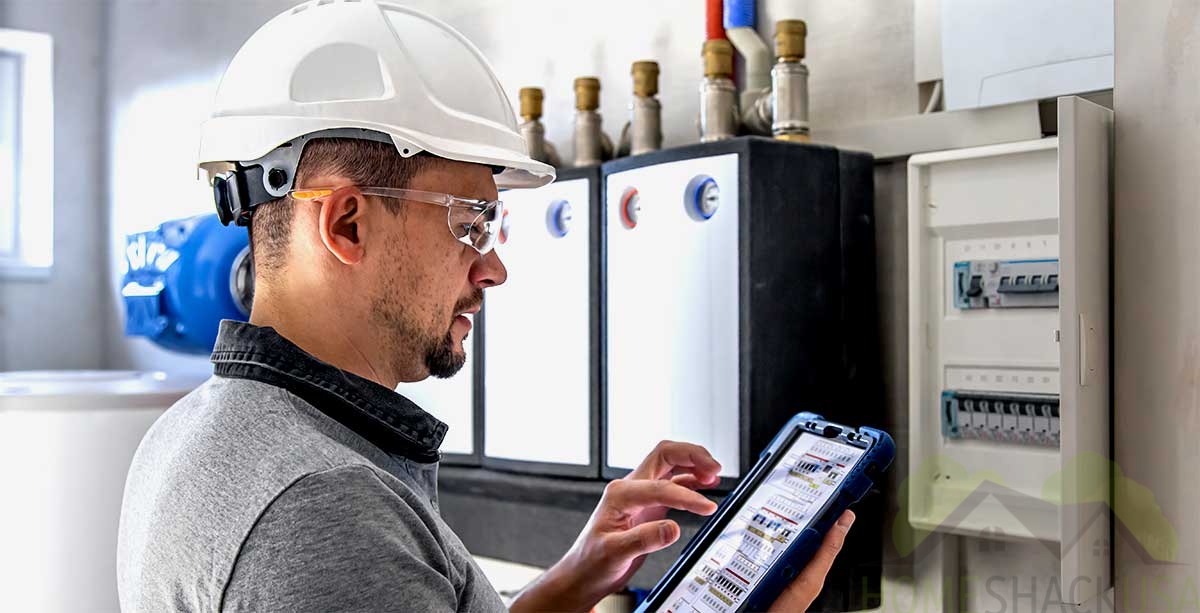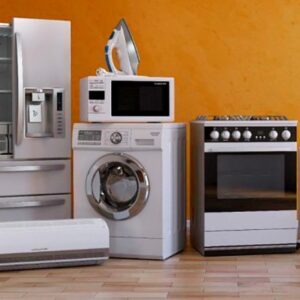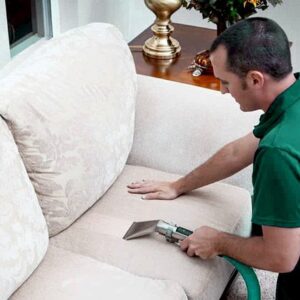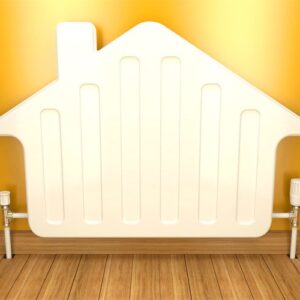How much does a home inspection cost when buying or selling a property? This is a crucial question that arises during the real estate transaction process.
The cost of a home inspection is vital as it can save you from unexpected expenses and headaches down the line. A home inspection involves a detailed assessment of the property’s condition, highlighting potential issues.
How much does a home inspection cost? Several factors influence this, including the property’s size, location, and age. On average, you can expect to pay between $300 and $500. Knowing what’s typically included in an inspection empowers both buyers and sellers to make informed decisions. Whether you’re a first-time homebuyer or a seasoned investor, grasping the importance and cost of a home inspection is essential.
What Is a Home Inspection?
A home inspection is a thorough evaluation of a property’s condition conducted by a certified home inspector, which aims to identify potential problems such as hidden damage, safety hazards, or issues related to home systems like plumbing, electrical systems, HVAC, roof condition, and foundation. This assessment plays a crucial role in the home buying journey, helping homebuyers make informed financial decisions before finalizing their purchase.
Why Is a Home Inspection Important?
A home inspection is vital for prospective buyers as it helps uncover potential problems, current issues, and defects within the property that might not be visible during a casual viewing.
This inspection safeguards the financial investment and contributes to determining the overall home value, ensuring that homebuyers are well-informed about the property condition before making significant financial decisions.
What Are the Benefits of a Home Inspection?
The benefits of a home inspection are manifold, providing a detailed home inspection checklist that highlights potential issues, expert recommendations for repairs, and insights on maintaining the property, which ultimately ensures buyer protection and enhances market trends as well as home maintenance strategies for future homeowners.
For instance, homeowners can uncover hidden damage that may not be immediately visible, potentially saving them significant costs down the line. In addition, ensuring safety through rigorous assessments can prevent hazardous situations from developing.
When it comes time to negotiate repairs, having a thorough report can give the power to buyers, offering them leverage in discussions with sellers.
The condition of a property can influence market trends, as well-maintained homes are often valued higher:
- Identifying hidden damage;
- Ensuring safety;
- Assisting in negotiations for repairs;
- Influencing market trends.
Engaging a qualified inspector not only highlights essential repairs but also provides valuable insights into the ongoing maintenance required to preserve the property’s value, ultimately guiding new homeowners in making informed decisions.
What factors affect the cost of a home inspection
Several factors can affect the cost of a home inspection, including the house size, home age, location, and whether any additional services or specialty inspections are required, such as radon testing or mold inspections, which can significantly influence the home inspection costs and overall budget for potential homebuyers.
Size of the property
The size of the property is a significant factor in determining home inspection costs, with larger homes typically requiring more time and resources to inspect thoroughly, thus influencing the financial decisions of homebuyers as they evaluate their overall budget.
When considering different property dimensions, it’s clear that smaller homes, generally under 1,000 square feet, incur lower inspection fees due to the reduced time it takes for an inspector to evaluate all aspects of the property.
For instance, an inspection for a compact studio apartment might cost around $300 to $400. In contrast, homes exceeding 2,000 square feet often demand significantly higher fees—sometimes ranging from $500 to $800—because the inspector must navigate through multiple rooms, check various systems, and assess additional features, which can be time-consuming.
- Inspection Fees for homes 1,000 sq ft or less: $300 – $400;
- Inspection Fees for homes over 2,000 sq ft: $500 – $800.
Such variations emphasize the importance of factoring inspection costs into the overall financial planning process when purchasing a home.
Age of the property
The age of the property can significantly affect the home inspection cost, as older homes may have more current problems, hidden damage, and outdated systems that require thorough examination and additional reporting, making a comprehensive inspection report crucial for homebuyers.
When considering a property, it’s essential for prospective buyers to be aware that older houses often come with their own set of challenges.
Common issues include outdated electrical systems, which may not meet modern safety standards. Plumbing problems are frequent, as the materials used in older homes can corrode or deteriorate over time.
Issues such as improper insulation and outdated HVAC systems can result in higher energy costs. Structural concerns, such as settling foundations or deteriorating roofing, are typical problems found during inspections of aged properties.
Thus, understanding the history and condition of an older home can help buyers prepare for potential repairs and negotiate fair pricing.
Location of the property
The location of the property plays a critical role in home inspection costs, as certain areas might have varying real estate market trends, which can influence the demand for inspection services and subsequently the pricing structures set by home inspectors.
For instance, in California, where property values tend to be on the higher end of the spectrum, the demand for thorough inspections is often elevated, leading to increased fees for these services.
Conversely, in regions like Tornado Alley, factors such as frequent severe weather might compel inspectors to price their services based on risks associated with storm damage. California’s competitive housing market often results in more stringent inspection requirements, driving up costs. Tornado-prone areas may see fluctuating demand for inspections following seasonal storms, impacting pricing variability.
As potential homeowners navigate these diverse landscapes, understanding how location-specific risks and market conditions influence inspection expenses becomes crucial in their decision-making process.
Additional Services Needed
Additional services needed during a home inspection, such as specialty inspections for mold, radon, or asbestos testing, can significantly increase the overall costs of the home inspection, but these services are essential for ensuring buyer protection and thorough evaluation of the property’s safety and condition.
Understanding these additional services is vital for buyers, as they play a crucial role in uncovering hidden issues that standard inspections might overlook. Home inspectors often offer options like:
- Mold Testing– essential in areas prone to moisture, this can uncover potential health risks and prevent costly remediations in the future;
- Radon Testing – with radon being a leading cause of lung cancer, testing for this gas is not only prudent but can lead to savings on long-term health expenses;
- Asbestos Inspection – older homes may contain asbestos, and identifying its presence can prevent hazardous exposure.
While these inspections may add to the overall cost, particularly depending on the property’s size and age, the peace of mind they provide is invaluable. By investing in these checks, homeowners can make informed decisions and protect themselves against potential safety hazards that could arise later.
What Is the Average Cost of a Home Inspection?
The average cost of a home inspection can vary widely depending on factors such as location, property size, and specific inspection types, but generally, home inspection costs in the United States hover around a national average that homebuyers should be aware of when budgeting for their prospective property purchases.
US National Average
The national average for home inspection costs typically ranges from $300 to $500, depending on various factors that homebuyers should consider when planning their budgets for property transactions.
Several elements can influence the final cost of a home inspection. For instance, the size of the property plays a pivotal role; larger homes may command higher fees, reflecting the increased time and effort required for a thorough evaluation.
Similarly, location greatly impacts prices with urban areas often experiencing higher rates due to demand and living costs. The age and condition of the home can also lead to fluctuations.
Homebuyers should also consider any specialized inspections that might be necessary, such as for pest infestations or mold, as these can add $100 to $300 to the overall expense.
In certain states, the cost can soar beyond $600, particularly if the inspection covers additional amenities or is part of a larger package.
Therefore, understanding these variables can help prospective buyers prepare an accurate budget, ensuring no financial surprises arise during the purchasing process.
Cost Breakdown by Region
A cost breakdown by region reveals that home inspection costs can vary significantly; for instance, urban areas like New York City may experience higher fees compared to regions in the Midwest due to differing real estate market dynamics and demand for home inspection services.
For example, in California, where housing prices soar due to high demand, home inspections can range from $500 to $1,000 depending on the property’s size and complexity. Conversely, in states like Ohio or Indiana, potential buyers might spend between $300 to $450 for a comparable service. These variations highlight how regional factors such as population density, the local economy, and even competition among inspectors can greatly influence costs.
- In metropolitan areas, the sheer number of transactions often leads to increased service demand;
- In contrast, rural areas may see lower demand, resulting in more competitive pricing among inspectors.
Understanding the local real estate landscape is vital for homeowners looking to budget for inspections, as this can help them prepare for significant differences in expenses across various locations.
Cost Breakdown by Property Size
The cost breakdown by property size indicates that homes over 2,000 square feet typically incur higher inspection fees compared to homes under 1,000 square feet due to the increased time and resources needed to conduct a thorough evaluation.
As a result, potential buyers should be aware that while larger properties may offer more space and amenities, they also come with a financial commitment that extends beyond the purchase price.
For instance, an inspection for a property measuring 2,500 square feet could cost upwards of $500, whereas inspections for homes under 1,000 square feet often range from $300 to $400.
This difference highlights a crucial aspect of real estate investment.
- $500 average for 2,500 sq. ft. homes;
- $300 to $400 for properties under 1,000 sq. ft.;
It is important to consider how these inspection costs might impact overall buying decisions, particularly for first-time homeowners who are managing tighter budgets.
What Does a Home Inspection Include?
A comprehensive home inspection includes various elements outlined in a home inspection checklist, covering the exterior and interior inspection of the property, as well as specialized assessments such as roof inspection, plumbing and electrical inspection, and HVAC systems evaluation to ensure the home’s overall safety and condition.
Exterior Inspection
The exterior inspection involves assessing the property’s condition, looking for safety hazards such as structural issues, water damage, and the overall state of the exterior features, which are crucial for determining the longevity and safety of the home.
During this vital process, inspectors closely examine various components, including the roof, siding, windows, and doors. Each element plays a significant role in the property’s protection against external elements.
- They check for signs of water intrusion, which can lead to costly repairs if not addressed promptly;
- Potential structural problems such as cracks in the foundation or walls can severely impact the property’s integrity and require immediate attention;
- Common challenges identified during these inspections also include peeling paint and damaged gutters, which can contribute to further deterioration.
The findings from these assessments not only influence the property’s value but also the peace of mind for future occupants, emphasizing the importance of thorough inspections.
Interior inspection
The interior inspection focuses on evaluating the conditions of essential home systems, such as plumbing, electrical systems, and heating/cooling (HVAC), while assessing for any safety hazards or signs of wear that could affect the property condition and the comfort of its occupants.
During this thorough process, each component plays a crucial role in revealing the overall health of the home. Inspectors examine the condition of the plumbing to ensure there are no leaks or corrosion, which could lead to severe water damage if left unattended.
- The electrical systems are scrutinized for outdated wiring and proper grounding, critical for preventing fire hazards;
- Heating and cooling systems are tested for efficiency and safety, considering their direct impact on indoor air quality and energy consumption.
The evaluation includes checking for safety features such as smoke detectors and carbon monoxide alarms, as their presence can significantly reduce risks for the inhabitants. Identifying these hazards early not only helps maintain the home’s value but also assures a safe living environment.
Roof inspection
A roof inspection is critical for assessing the roof condition, identifying potential water damage, and ensuring the structural integrity of the home, as roofing issues can lead to significant problems if not addressed promptly.
This comprehensive evaluation typically involves a detailed examination of various components, including shingles, flashing, gutters, and structural supports. The inspector will look for signs of wear and tear, such as cracked or missing shingles, improper sealing at joints, and any buildup of debris that may trap moisture.
Common issues discovered during an inspection can include mold growth, deterioration from heavy rainfall, or even pest infiltration, each of which can compromise the roof’s effectiveness.
Addressing these concerns is vital, as neglecting them could escalate into major repair costs or even necessitate a full roof replacement. Regular inspections not only extend the life of the roof but also provide homeowners with peace of mind, knowing their home is better protected from the elements.
Plumbing and Electrical Inspection
The plumbing and electrical inspections are crucial for ensuring that essential home systems are functioning properly and safely, as faulty plumbing can lead to damage and mold, while electrical issues pose safety hazards that could endanger the occupants.
During plumbing inspections, professionals examine the entirety of the piping system, looking for leaks, corrosion, and proper drainage. Inspectors pay close attention to water pressure, which can indicate deeper issues, and they also check appliances connected to the plumbing, such as water heaters and dishwashers, for any signs of wear. The presence of improper connections or outdated materials can raise red flags.
Similarly, electrical inspections involve a meticulous review of wiring, outlets, and the overall electrical panel. Inspectors look for signs of overloading, exposed wires, and the condition of circuit breakers.
Common plumbing or electrical issues often found in the houses include:
- Faulty outlets that can spark or short circuit;
- Outdated electrical systems that do not meet current codes;
- Inadequate grounding and bonding.
Both plumbing and electrical inspections are vital, as they not only ensure compliance with safety standards but also protect the long-term integrity of a home.
HVAC house inspection
An HVAC inspection focuses on evaluating the efficiency and functionality of heating, ventilation, and air conditioning systems, ensuring that they operate effectively and contribute to the overall energy efficiency of the home, which is vital for buyer protection.
During an inspection, skilled professionals will assess various components, looking for potential issues that could lead to costly repairs or inefficient operations later on. This process includes checking the functionality of thermostats, inspecting ductwork for leaks, and evaluating the overall system performance.
Some common issues that might arise include:
- Dirty filters that restrict airflow, impacting system efficiency;
- Faulty wiring that can lead to safety hazards;
- Insufficient insulation that affects temperature regulation;
- Refrigerant leaks which could potentially harm indoor air quality.
By identifying such problems early, homeowners can significantly enhance their system’s longevity and effectiveness, contributing to a comfortable living environment.
What Are the Additional Services That May Increase the Cost of a Home Inspection?
Certain additional services such as radon testing, mold testing, termite inspections, and asbestos testing can significantly increase the cost of a home inspection, but these specialty inspections are crucial for identifying potentially hazardous conditions that could affect buyer safety and property value.
Radon Testing
Radon testing is a specialty inspection that assesses the levels of radon gas in the home, a known safety hazard that can lead to serious health issues; therefore, it is a critical part of the home inspection process for buyer protection.
Understanding the significance of radon testing extends beyond mere compliance with real estate regulations; it serves as a proactive measure to safeguard both health and wellbeing. Homeowners and potential buyers alike should recognize that radon is an invisible gas, originating from the natural decay of uranium in soil, which can accumulate in poorly ventilated areas.
- The testing process typically involves the placement of a radon detector in the lowest inhabited level of the residence;
- This detector collects data over a specified period, often ranging from two to seven days, to provide accurate readings of radon concentrations.
Failure to conduct thorough radon testing may expose unsuspecting individuals to elevated levels of this hazardous gas, significantly increasing the risk of lung cancer. In fact, the Environmental Protection Agency estimates that radon is the second leading cause of lung cancer in the United States.
Consequently, prioritizing radon testing is not just prudent; it is essential for ensuring peace of mind and safeguarding future wellness.
Mold testing
Mold testing is an essential specialty inspection that determines the presence of mold in a property, which can be a significant safety hazard and indicate hidden damage due to moisture issues, making it crucial for protecting the health of the occupants.
When residents suspect mold contamination, professionals utilize various methods to identify types of mold and their origins. During an inspection, they often take air samples and surface samples, which are then analyzed in a laboratory for mold spores. Moisture meters may be used to detect areas of high humidity, pinpointing potential locations for mold growth.
Common issues revealed through testing include:
- Inadequate ventilation leading to humidity buildup;
- Leaks from plumbing or roofs causing hidden water damage;
- Past flood events leaving residual moisture.
By understanding these findings, property owners can address underlying problems, ensuring a safer living environment for everyone.
Termite inspection of your home
A termite inspection evaluates the property for signs of termite damage, which can lead to significant hidden damage and compromise the overall property condition, making it an essential component of a thorough home inspection.
During this inspection, trained professionals meticulously scour both the interior and exterior of a structure looking for various indicators of infestation. This includes checking for mud tubes, damaged wood, or frass, which is actually the droppings of these pests.
The inspectors also examine areas that are typically hidden, such as crawl spaces and attics, where termites may thrive unnoticed.
Early detection is crucial since finding termite damage can lead to more extensive repairs and possible loss in property value.
Homeowners are often advised to schedule regular inspections to ensure their property remains safe and secure from these destructive pests.
Home asbestos testing
Asbestos testing is a crucial specialty inspection that identifies the presence of asbestos in older homes, a known safety hazard that poses serious health risks, thus making it a vital part of the home inspection process for buyer protection.
The significance of asbestos testing extends beyond mere compliance; it is essential for safeguarding health and ensuring safe living environments.
Conducting this testing typically involves a comprehensive evaluation, where trained professionals collect samples from potential asbestos-containing materials, such as insulation and flooring. These samples are then sent to accredited laboratories for analysis.
- The potential health risks associated with asbestos exposure include serious conditions like asbestosis and mesothelioma;
- Long-term exposure can lead to debilitating respiratory diseases;
- Homeowners, tenants, and workers in older buildings are particularly at risk.
Understanding the importance of such testing is crucial for preventing exposure and ensuring the safety of all inhabitants.
How much does a home inspection cost? /FAQ/
1. How much does a home inspection cost in general?
The average cost of a home inspection in the United States ranges from $300 to $500, depending on the size and location of the home.
2. Are there any additional fees I should be aware of?
In some cases, additional fees may be charged for homes with special features such as pools, septic systems, or older homes. It is important to discuss these fees with your inspector beforehand.
3. Do different types of homes have different inspection costs?
Yes, the cost of a home inspection may vary for different types of homes such as single-family homes, condos, townhouses, and multi-unit properties. It is best to check with your inspector for specific pricing for your type of home.
4. Can I negotiate the cost of a home inspection?
While some inspectors may offer discounts or negotiate fees, it is important to prioritize the quality and thoroughness of the inspection over cost. A cheaper inspection may end up costing you more in the long run if potential issues are overlooked.
5. What factors can affect the cost of a home inspection?
The size and age of the home, the location, and any additional features or services requested may all impact the overall cost of a home inspection. It is important to discuss these factors with your inspector beforehand.
6. Are there any hidden costs associated with a home inspection?
No, reputable home inspectors will be transparent about their fees and any additional charges. However, it is always a good idea to ask for a breakdown of the costs beforehand to avoid any surprises.
